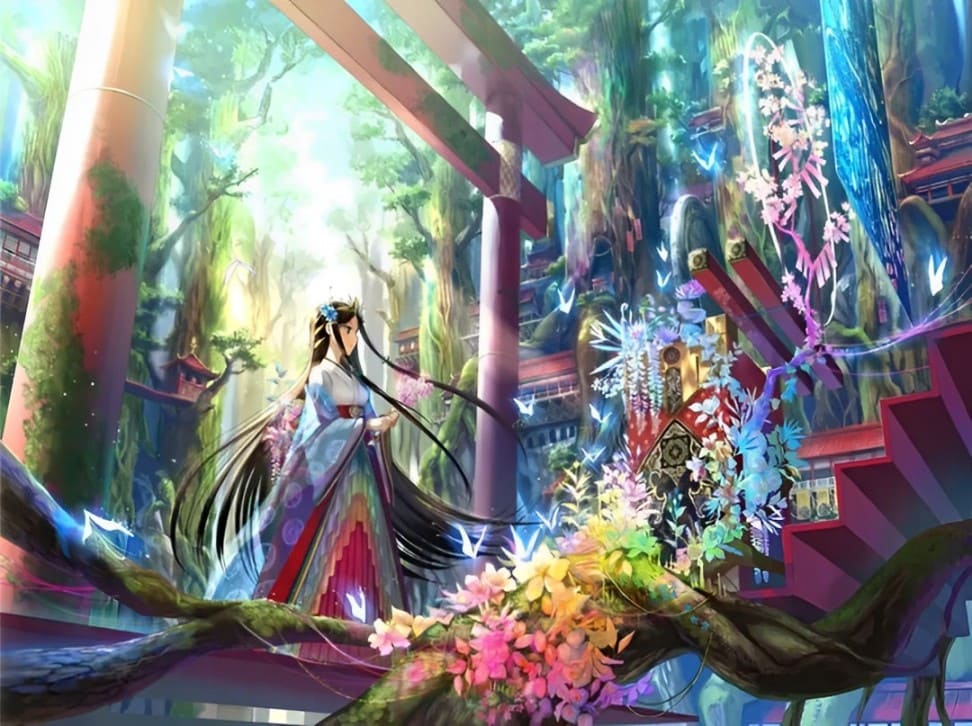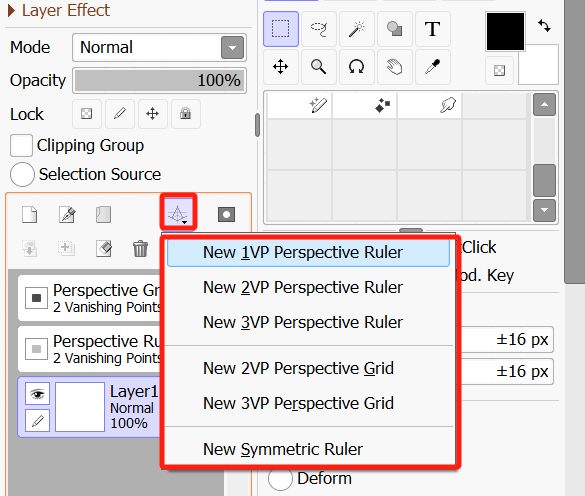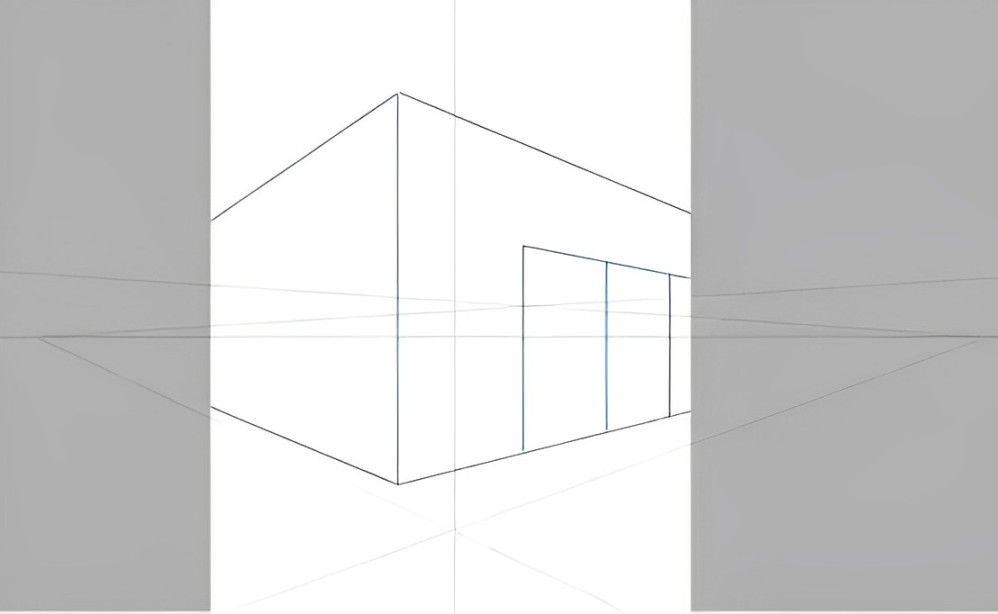How to Draw Perspective in Digital Art?
Whether you want to add depth to your artwork or experiment with new creative techniques, perspective is a must-have skill in digital painting.
In this article, we will explore some simple perspective drawing techniques together to help you create a more realistic sense of space in your art. Let's kick off this exciting journey!

In this article, you will learn:
- What Is Perspective?
- 3 Techniques for Mastering Perspective Drawing
- How to Quickly Master Perspective in Digital Drawing?
- Conclusion
What Is Perspective?
Simply put, it's about showing a three-dimensional feel on a flat surface. This includes a sense of volume, depth, and spatial distance in objects.
Perspective is fundamental for portraying figures and scenes accurately. A great piece of art must be built upon a solid foundation of perspective.
Imagine this: without precise perspective, the whole picture lacks harmony even with perfect color and atmosphere.

3 Techniques for Mastering Perspective Drawing
Mastering perspective isn't as daunting as it may seem. In this section, we'll share three techniques that will make adding perspective effects to your work a breeze.
1. Visual Perspective
Understanding the following concepts will help you grasp visual perspective better:
- Vanishing Point: In a perspective view, objects appear smaller as they get farther away, with infinitely distant objects eventually vanishing into a point.
- Eye Level: Determined by the height at which you observe objects with your eyes.
- Horizon Line: This marks the point where the sky meets the ground in the picture, typically where they seem to converge.
By following the principles of objects appearing larger when closer and smaller when farther away, as well as considering aspects like proximity, height variation, and the position of the horizon line, you can determine how objects change in space.
Based on the number of vanishing points, visual perspective can be categorized into one-point perspective, two-point perspective, and three-point perspective.

Here are the scenarios where these three visual perspective methods are commonly used:
- One-Point Perspective: Often employed for compositions where objects are viewed directly from the front.
- Two-Point Perspective: Typically used for compositions where objects are observed from a diagonal side view.
- Three-Point Perspective: Commonly utilized for drawing inclined compositions of large volumetric objects viewed from below or for aerial compositions looking down from a height.
A particular point worth mentioning here is the one-point perspective technique. This type of perspective often leads to static compositions, making the artwork appear relatively dull.
However, by slanting the Eye Level, you can create a dynamic composition that adds movement to the scene.
You can use perspective and the arrangement of elements in your composition to guide the viewer's gaze.
If you want the audience to see both the characters and the background, consider placing the vanishing point in the background and positioning the characters in the foreground.
The illustration below is the work of the Japanese illustrator Fujichoko. Can you feel a strong sense of perspective in this illustration?

Fujichoko achieves this effect by slanting the Eye Level and placing the characters in the foreground with the vanishing point in the background.
This is why even though this illustration lacks obvious perspective elements, you can still sense the depth and perspective it conveys.
There are a few additional tips and tricks about visual perspective in drawing that we'd like to share:
- Avoid Close Proximity of Vanishing Points: When dealing with multiple vanishing points, having them too close together can make the perspective appear unnatural. In such cases, it's important to increase the distance between vanishing points.
- Mind the Position of the Eye Level: For one-point and two-point perspective, try to keep the Eye Level position neither too high nor too low.
- Develop a Sense of Perspective: If you struggle to locate vanishing points, try starting by copying architectural photographs. Many people find it easier to grasp perspective when working with architectural elements.
By practicing consistently, you can enhance your ability to identify vanishing points effectively.
2. Atmospheric Perspective
Atmospheric perspective refers to using atmospheric elements to convey a sense of depth in space.
Specifically, the presence of water vapor, smoke, dust, and other atmospheric particles in the air causes light to refract, resulting in different degrees of color changes for objects at near, medium, and far distances due to optical effects.
For instance, when you look at a mountain, the further you go, the objects become brighter and more transparent. Additionally, with increased distance, the mountain's contours become increasingly blurred.
By leveraging this feature, you can portray spatial depth through changes in color and transparency, much like in the illustration below.

3. Color Perspective
Yes, you read it right! You can also challenge the viewer's perception of depth through color.
Colors are primarily categorized into warm and cool tones. Warm colors like red and yellow tend to appear to advance, while cool colors like blue and green seem to recede.
Even within the same color family, higher saturation and brightness make objects appear closer, while lower saturation and brightness make them seem farther away.

When depicting a landscape with deep green mountains, for example, the foreground mountains can be painted in green with warm touches of light yellow.
As you gradually paint the distant mountains, the warm tones fade away, transitioning them into cool light blues, guiding the viewer's gaze into the distance.

This color perspective technique is commonly seen in Fujichoko's works as well. In the illustration below, for instance, the use of pink in the foreground and blue in the background emphasizes the sense of depth throughout the entire artwork.

How to Quickly Master Perspective in Digital Drawing?
By this point, you might still feel a bit unsure about how to tackle perspective in your drawings.
In that case, why not give PaintTool SAI2 a try? It's a lightweight yet incredibly user-friendly digital drawing software.
SAI2's Perspective Ruler and Perspective Grid features are a godsend for beginners in digital drawing.

With the assistance of these two tools, drawing any scene in perspective becomes a breeze, effortlessly helping you solve any perspective issues!
Simply hold down the Ctrl/Command key to drag the vanishing point or move the perspective ruler—it's easy to get the hang of.

Conclusion
Perspective is an essential element in drawing. Without it, creating a sense of depth is nearly impossible. Mastering perspective techniques will make your artwork more vibrant and eye-catching.
Of course, the key to improving your skills lies in observing and practicing more. Keep the passion for creating alive and continue exploring!
Lastly, we'd like to recommend a controller, TourBox, that can significantly enhance your efficiency and experience in digital drawing.

With TourBox, you can easily perform common but intricate tasks in drawing, such as adjusting brush sizes, rotating the canvas, creating layers, and more—all with just one hand. It's like using a game controller while playing video games, making your creative process smooth, simple, and efficient.

Based on our tests, TourBox can boost drawing efficiency by 270%. Check out our digital painting page to see why TourBox is so remarkable.